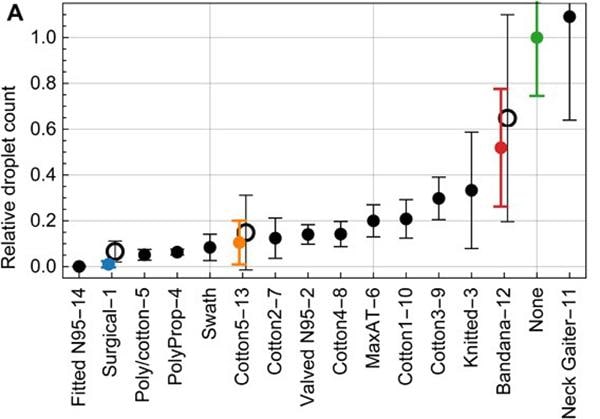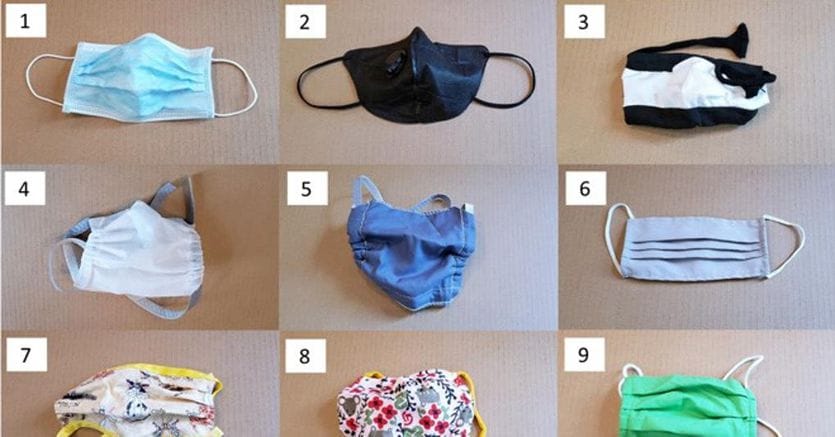–
The same goes for the valve masks, which are even less effective in stopping the drops emitted and for all those of home manufacture which, unless they are very close to the face and made of multilayer materials, are of little use. Surgical masks on the other hand, while not being able to block every drop, are much better. published in Science Advances by researchers at Duke University in Durham, North Carolina, focuses on the domestic variants of masks, made with the most disparate materials: it analyzes as many as 14, together with the surgical one and the one called N95, more protective for the wearer than surgical, with or without valve.

–
Also in this case, the best performances are precisely the latter, followed by surgery. All other models, including the N95 with valves, do not avoid the dispersion of droplets. The masks of the images above, and object of the study, are of this type:
1.Surgical (3 layers)
2.N95 with valve
3.Knitted
4.PolyPprop (2 layers of propylene, apron)
5.Ply / Cotton (cotton-prolipene-cotton)
6. MaxAT (one layer of Maxima AT, polymer)
7.Cotton 2 (two layers of cotton, pleated)
8. Cotton4 (two layers of cotton, Olson style, more anatomical and linear)
9. Cotton 3 (two layers of cotton, pleated, without a particular style)
10. Cotton 1 (one layer of cotton, pleated)
11. Neck Gaiter – neck band (one layer of polyester and spandex, another polymer, weight 0.022g per cm2)
12. Bandana: double layer bandana, weight 0.014g / cm2)
13. Cotton 5 (two layers of cotton, pleated)
14. N95 without valve
The masks of the near future
In the meantime, however, the bioengineers of Georgia Tech University, who have been involved in the field of innovative materials for many years, are working on the issue, who have created a two-part mask that could convince many to abandon DIY. As illustrated, with photos, in the Journal of Textile Institute the first, which exploits the characteristics of some fabrics born for professional athletes, consists of a pocket that houses a washable filter material in polyester and Spandex (another polymer), surrounded by an extremely snug edge, but which allows you to speak and breathe comfortably, reducing the desire to take it off.
The other part, connected to the first so as to cover the face even laterally, is in strech, again in polymers (this time Spandex / Lyocell) with eyelets and hooks to fix it, and with holes for the ears, so as to adapt it perfectly to the circumference of each one’s head (photo also who). The idea is to help people carry it all the time and, at the same time, reduce costs and, above all, the disposal of disposable masks, while ensuring the maximum possible protection.
–


